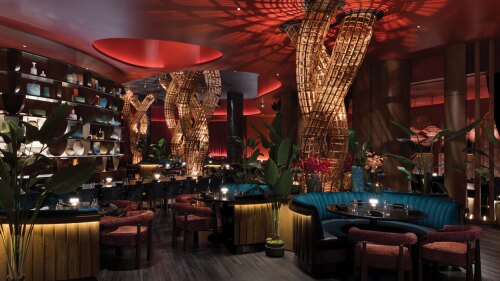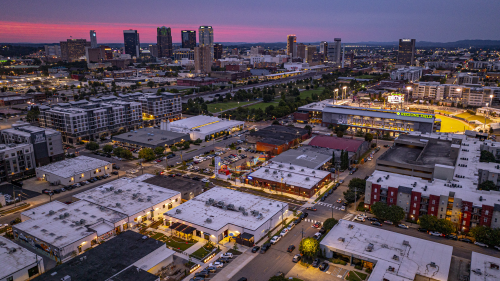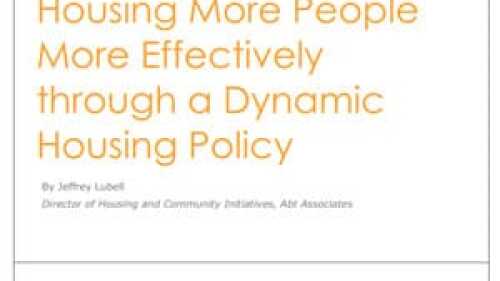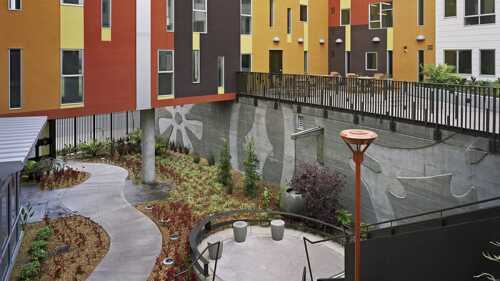Property Types
Hotels and Resorts
The hotel industry in the United States faces complex challenges in 2025, according to Jan Freitag, national director of hospitality analytics for the CoStar Group. During the “State of the U.S. Hotel Industry” presentation at the ULI 2025 Spring Meeting in Denver, Colorado, Freitag highlighted the challenges facing the hotel business amid macroeconomic uncertainty.
Once a sprawling expanse of uncharted land, Las Vegas, Nevada, has evolved into the entertainment capital of the world, a gaming super-hub, and a premier destination for sports. This remarkable transformation didn’t happen overnight; it stemmed from decades of strategic planning, investment, and visionary zoning recommendations.
Las Vegas is unlike any other place in America. Each year it draws more than 40 million visitors to the dazzling casinos and hotels that “turn night into daytime”—and transform the city into a glittering jewel in the desert. With 164,000 hotel rooms, Las Vegas is the largest hospitality market in the U.S.—outpacing Orlando, Florida, the next biggest market, by approximately 15 percent, according to JLL.
Industrial
Standing in the shadow of Regions Field and within earshot of Railroad Park, Birmingham’s Urban Supply hints at what the next chapter of downtown life could look like. Once-quiet brick warehouses are being steadily reimagined into patios, storefronts, and gathering spaces along a new pedestrian alley. Early tenants have begun to open their doors, and programming is slowly bringing people into the district. While the project is still in its early stages, the framework is in place for a vibrant hub that will grow block by block in the years ahead.
What trends are shaping the future of the industrial sector? Four experts from ULI’s Industrial and Office Park Development Council talk about the industrial submarkets and property types that offer the greatest opportunities, challenges developers face in bringing new projects to market, ways artificial intelligence and emerging technologies are reshaping the sector, tenant priorities, and other key trends.
After a quiet first half of 2024, CMBS originations increased 59 percent in Q3 on a year-over-year basis, according to the Mortgage Bankers Association’s Quarterly Survey.
Mixed-Use
The JBG companies got their start in 1960 by law partners who realized they were doing more real estate work than law. For five decades the firm has been willing to challenge the status quo, as when they resisted the 1990’s trend toward becoming a real estate investment trust (REIT). Today it is almost impossible to walk around urban Washington, D.C.— particularly the areas surrounding Metrorail stations—without seeing the firm’s familiar lion’s-head logo.
Nashville-based developer David McGowan knew a change of course was necessary to ensure continued success at Lenox Village, a mixed-use, new urbanist development in southeast Nashville. It was 2007 and the market for for-sale housing was slowing down while rental housing was still strong. Read how McGowan shifted the project in the face of the oncoming slowdown in the economy.
Because bus rapid transit (BRT) seems to play out differently in every community, different types of bus infrastructure and service may all be called BRT. Both the public and private sectors need to share the specifics of what is being planned and developed. Only then will it be clear whether there are opportunities to turn your community’s BRT into bus rapid transit-oriented development (BRTOD).
Multifamily
As congregations across North America grapple with shrinking membership and aging facilities, a new opportunity is emerging: transforming faith-owned land into affordable housing and community-serving spaces. At the 2025 ULI Fall Meeting in San Francisco, panelists in the session “Spiritual Brownfields: Declining Congregations and Opportunities for Housing on Faith-Owned Land” explored how churches and developers are partnering to bring mission-driven housing to underused sacred sites.
At the 2025 ULI Fall Meeting in San Francisco, leaders from across the development and construction industries discussed how they are adapting to a volatile yet stabilizing housing landscape in a session called “Report from the Field: Wrestling with the Cost of Housing Construction.” Despite headlines about tariffs, labor shortages, and inflation, the panelists agreed that the cost environment has settled into what one called a “new normal.”
A panel of insiders reveals what’s true—and false—about the housing crisis and how to fix it.
Office
Modern design and construction techniques have relaxed many of the constraints that form the basis for 21st-century office building design. However, certain universal guidelines exist that organize the building infrastructure and reinforce the perception of rational planning and flexibility. Learn the seven pillars of office building design, and which of the seven is being challenged for the first time.
Teams from 245 buildings around the country are going head to head in this year’s U.S. EPA Energy Star National Building Competition. Although the winner will be chosen based on which structure realizes the largest percentage reduction in energy use, the competition is also intended to highlight the importance of sustainability and to share best practices case studies.
A flexible service office provides business space on a flexible, short- to medium-term basis to occupiers, especially larger corporations and companies that want to test a new market/location, small and medium enterprises, and startups. Read about the market links between these flexible spaces and traditional offices.
Residental
As U.S. home prices have bounced back, activists, advocates, and community developers have struggled to make housing more affordable.
The design quality of affordable housing can have a substantial positive effect on both residents and the surrounding community.
The big housing news of 2015 so far has been the Obama administration’s announcement that the Federal Housing Administration (FHA) will reduce the annual premiums new borrowers pay for FHA-insured home mortgage loans by 50 basis points—a half percentage point. But what impact will that have on affordability?
Retail
For decades, civic leaders have tried to revitalize Market Street, San Francisco’s central thoroughfare, only to see their efforts founder. “I sometimes call it the great white whale of San Francisco,” says Eric Tao, managing partner at L37 Development in San Francisco and co-chair of ULI San Francisco. “Every new mayor, every new planning director, every new economic development director has chased that white whale.” This year, however, an international competition of ideas hosted and run by ULI San Francisco, with support from the ULI Foundation, generated fresh momentum for reimagining the boulevard. The competition drew 173 submissions from nine countries and sparked new conversations about the future of downtown San Francisco.
The OAK project began in 2009, when a development firm set their sights on the corner of Northwest Expressway and North Pennsylvania Avenue, the state’s most important and busiest retail intersection. As the region’s only parcel capable of supporting a vertically integrated project of this scale and density, that land represented an opportunity to create something truly special.
As aging retail continue to evolve, one increasingly popular trend has been to redesign malls as town centers—recalling a time when such commercial districts were the heart and soul of a community. Mall–to–town center retrofits are emerging throughout the nation, especially in suburban communities, where pedestrian-friendly, mixed-use environments are highly attractive to millennials now raising families.















